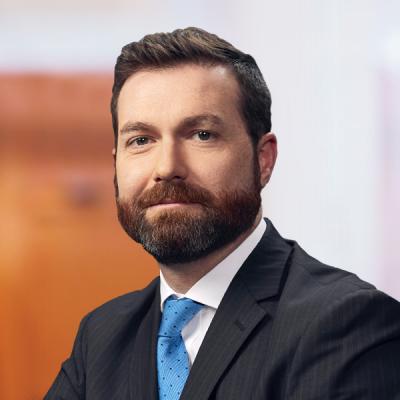What's New in 5G - July 2020
The next-generation of wireless technologies – known as 5G – is here. Not only is it expected to offer network speeds that are up to 100 times faster than 4G LTE and reduce latency to nearly zero, it will allow networks to handle 100 times the number of connected devices, revolutionizing business and consumer connectivity and enabling the “Internet of Things.” Leading policymakers – federal regulators and legislators – are making it a top priority to ensure that the wireless industry has the tools it needs to maintain U.S. leadership in commercial 5G deployments. This blog provides monthly updates on FCC actions and Congressional efforts to win the race to 5G.
Mintz Further Develops Its 5G Practice Team
On a firm note, we are excited to announce that Mintz is continuing to grow its nationally recognized Technology, Communications & Media (TechComm) practice with the arrival of leading industry attorneys T. Scott Thompson and Daniel P. Reing, who have joined the firm as Members based in the Washington, DC office.
Scott will Chair our Infrastructure Litigation Practice and represents companies and industry associations in a broad range of legal, regulatory, and policy matters involving the deployment of wireless and wireline telecommunications networks. He leverages more than two decades of experience and his in-depth knowledge of the industry to help clients develop strategies for nationwide deployments and resolve high-stakes disputes.
Dan works with cable, broadband, and wireless providers to develop smart strategies that overcome regulatory obstacles and achieve favorable litigation outcomes – allowing clients to advance critical projects and compete in a growing market. He has taken on myriad communications franchising and deployment issues to enable the construction of wireless networks and facilities, and has played key roles in obtaining regulatory approvals for several of the largest mergers in the cable industry.
Regulatory Actions and Initiatives
COVID-19 Relief
- FCC Chairman Pai urges Congress to ensure Americans can stay connected during COVID-19.
- FCC Chairman Pai sent a letter to Congress on June 19, 2020, asking it to enact legislation that would help consumers and small businesses stay connected even after the end of the Chairman’s Keep Americans Connected Pledge, which expired on June 30, 2020. Chairman Pai explained that he has asked companies to offer consumers and small businesses who are behind on their bills in the wake of the pandemic the option of extended and deferred payment arrangements, but that more is needed. He specifically expressed support for the Broadband Connectivity and Digital Equity Framework proposed by Senator Wicker and Representative Greg Walden, which is discussed in further detail below.
- FCC Chairman Pai sent a letter to Congress on June 19, 2020, asking it to enact legislation that would help consumers and small businesses stay connected even after the end of the Chairman’s Keep Americans Connected Pledge, which expired on June 30, 2020. Chairman Pai explained that he has asked companies to offer consumers and small businesses who are behind on their bills in the wake of the pandemic the option of extended and deferred payment arrangements, but that more is needed. He specifically expressed support for the Broadband Connectivity and Digital Equity Framework proposed by Senator Wicker and Representative Greg Walden, which is discussed in further detail below.
- Continuing to assist wireless service providers with easing the strain on their networks during the pandemic, the FCC grants special temporary authority to Harlan County, Kentucky to operate on additional spectrum.
- On June 2, 2020, the FCC announced that it granted an emergency request for special temporary authority (“STA”) to Harlan 2-Way, Inc., which services Harlan County, Kentucky, so that it can use unassigned spectrum in the 2.5 GHz band for wireless broadband service during the COVID-19 pandemic. To date, the FCC has granted temporary authority to more than 100 entities, many of which are using the spectrum on an unlicensed basis to serve rural and suburban communities.
Low-Band Spectrum
- The FCC requests public input on making available spectrum currently used by public safety entities for commercial services by 2021.
- On July 6, 2020, the FCC released a Notice of Proposed Rulemaking seeking comment on reallocating spectrum in the 470-512 MHz band, known as the “T-Band,” for commercial services. The spectrum is currently utilized by public safety entities, but is required by the Middle Class Tax Relief and Job Creation Act of 2012 (“Spectrum Act”) to be reallocated and auctioned by February 2021. While FCC Chairman Pai has urged Congress to overturn this mandate, the FCC proposes to reallocate the public safety entities from the T-Band and assign new licenses by auction for the 6 to 18 megahertz of spectrum that is potentially available in each of the eleven urbanized areas.
Mid-Band Spectrum
- NTIA releases a long-awaited report on the potential sharing of mid-band spectrum in the 3.1-3.55 GHz band between federal and non-federal uses to increase access for commercial services.
- On July 6, 2020, NTIA released a report on the feasibility of sharing the 3.1-3.55 GHz band on a licensed and unlicensed basis. The report was required by the MOBILE NOW Act and was due by March 2020. According to NTIA’s press release, the report has two principal conclusions: (i) the 3450-3550 MHz portion of the band is a good candidate for potential spectrum sharing, including at the commercial system power levels sought by the wireless industry; and (ii) although sharing below 3450 MHz may be possible, additional analysis is required to assess various sharing mechanisms and the potential for relocating incumbents, which include both classified and unclassified federal operations.
- On July 6, 2020, NTIA released a report on the feasibility of sharing the 3.1-3.55 GHz band on a licensed and unlicensed basis. The report was required by the MOBILE NOW Act and was due by March 2020. According to NTIA’s press release, the report has two principal conclusions: (i) the 3450-3550 MHz portion of the band is a good candidate for potential spectrum sharing, including at the commercial system power levels sought by the wireless industry; and (ii) although sharing below 3450 MHz may be possible, additional analysis is required to assess various sharing mechanisms and the potential for relocating incumbents, which include both classified and unclassified federal operations.
- The FCC and others take additional actions as the auction of mid-band spectrum in the 3.5 GHz band for 5G services moves closer.
- On July 1, 2020, the FCC released a Public Notice announcing the applicants that have been qualified to bid and those that are not qualified to bid in its upcoming auction of spectrum in the 3.5 GHz band. Of the 348 parties that applied to participate, 271 applicants were deemed qualified to bid and 71 were not. Bidding in the auction will commence on July 23, 2020.
- In addition, on June 23, 2020, NTIA submitted a letter to the FCC notifying it of changes to the protection criteria for radar systems operating in or near eleven designated naval port locations in California, Washington, Florida, Virginia, Mississippi, and Maryland.
- Finally, on June 10, 2020, the FCC’s Wireless Telecommunications Bureau (“Wireless Bureau”) and the Office of Engineering and Technology released a Public Notice approving the updated Environmental Sensing Capability sensor deployment and coverage plans – used to detect the presence and trigger protections of incumbents in the 3.5 GHz band – of CommScope, Federated Wireless, and Google.
- The FCC continues to move to clear and auction spectrum in the C-band for 5G services while challenges to the FCC’s decisions at the D.C. Circuit continue.
- Recently, the FCC has taken several actions with respect to satellite operators and earth stations currently licensed in the band. On June 1, 2020, the Wireless Bureau announced that Eutelsat S.A., Intelsat US LLC (Intelsat), SES Americom Inc., Claro S.A. f/k/a Star One S.A., and Telesat Canada have committed to clear the 3.7-4.0 GHz band on the accelerated timeline described in the C-band Order. The Wireless Bureau also invited parties to provide comment on the lump sum categories and payment amounts for incumbent earth station operators and denied requests to extend the comment deadline. On June 19, 2020, the satellite operators submitted their transition plans, comments on which are due by July 13, 2020. By June 29, 2020, parties submitted proposals to become the Relocation Payment Clearinghouse.
- Meanwhile, on June 10, 2020, the Wireless Bureau denied the Joint Petition to Stay of the C-band Order filed by ABS Global Ltd., Empresa Argentina de Soluciones Satelitales S.A., Hispamar Satelites S.A., and Hispasat S.A. (together, the “Small Satellite Operators”). Additionally, on July 8, 2020, the Wireless Bureau denied a Petition for Stay filed by PSSI Global Services, LLC (“PSSI Global”), which asked the FCC to reconsider the amount of C-band spectrum to be auctioned, the FCC’s authority under Section 316, and the FCC’s ability to modify licenses. At the D.C. Circuit, PSSI Global filed a motion to dismiss SES Americom’s Notice of Appeal and Petition for Review from the D.C. Circuit proceeding, arguing that SES Americom has not suffered an injury as a result of the C-band Order and therefore has no standing to appeal. The D.C. Circuit also set a briefing schedule for the Small Satellite Operators’ and PSSI Global’s appeal. The Small Satellite Operators and PSSI Global’s joint brief is due July 21, 2020. The remaining briefs will be due in August and September 2020.
High-Band Spectrum
- Deadlines have been set for submitting comments on the FCC’s proceeding exploring innovative uses of the 71-76 GHz, 81-86 GHz, 92-94 GHz, and 94.1-95 GHz bands (the “70/80/90 GHz bands”) to support 5G services.
- The FCC’s Notice of Proposed Rulemaking seeking comment on changing the antenna standards for the 70 GHz and 80 GHz bands to allow smaller antennas, which will help facilitate the provision of wireless backhaul for 5G, has been published in the Federal Register. Comments and replies on the FCC’s proceeding are due August 5 and September 4, respectively.
5G Equipment and Infrastructure
- The FCC clarifies its rules relating to the modification of existing communications structures in preparation for 5G networks.
- On June 9, 2020, the FCC adopted a Declaratory Ruling and Notice of Proposed Rulemaking, also known as the 5G Infrastructure Order, which focuses on clarifying Section 6409(a) of the Spectrum Act. That provision streamlined local approval processes for certain eligible collocations and modifications to existing wireless structures. In doing so, the FCC provided important clarification of its initial rules implementing Section 6409. Notably, the FCC clarified issues where local governments had sought to thwart the pro-deployment intent of Section 6409, such as when a modification or collocation would conflict with preexisting “concealment” measures.
- The FCC also issued a Further Notice of Proposed Rulemaking, seeking comment on amendments to the definition of the “site.” Comments and replies on the Further Notice are due 20 and 30 days, respectively, after Federal Register publication.
- A coalition of local governments from Oregon and California have challenged the 5G Infrastructure Order in the U.S. Court of Appeals for the Ninth Circuit, arguing that it is arbitrary and capricious under the Administrative Procedure Act. Interested parties must intervene by July 22, 2020.
- The FCC bans Universal Service Fund (“USF”) support from being used to purchase Huawei and ZTE equipment and services because of the companies’ ties to the Chinese Communist Party and China’s military apparatus.
- On June 30, 2020, the FCC issued final designations prohibiting USF support from being used to purchase or obtain equipment or services produced by Huawei Technologies Company (“Huawei”) and ZTE Corporation (“ZTE”). The FCC adopted the final designations because Huawei’s and ZTE’s equipment and services pose a threat to U.S. national security interests, specifically to communications networks and the communications supply chain.
- On June 30, 2020, the FCC issued final designations prohibiting USF support from being used to purchase or obtain equipment or services produced by Huawei Technologies Company (“Huawei”) and ZTE Corporation (“ZTE”). The FCC adopted the final designations because Huawei’s and ZTE’s equipment and services pose a threat to U.S. national security interests, specifically to communications networks and the communications supply chain.
- The FCC authorizes Stage 2 high-cost support funding to mobile providers to improve broadband networks in Puerto Rico and the U.S. Virgin Islands.
- On June 15, 2020, the Wireline Competition Bureau authorized $237.9 million in Stage 2 high-cost support to AT&T, Puerto Rico Telephone Co., and T-Mobile over three years to restore, harden, and expand 4G LTE and 5G networks in Puerto Rico and the U.S. Virgin Islands in the aftermath of the 2017 hurricane season.
- On June 15, 2020, the Wireline Competition Bureau authorized $237.9 million in Stage 2 high-cost support to AT&T, Puerto Rico Telephone Co., and T-Mobile over three years to restore, harden, and expand 4G LTE and 5G networks in Puerto Rico and the U.S. Virgin Islands in the aftermath of the 2017 hurricane season.
- NTIA requests comment on sharing supply chain security risk information with trusted providers and suppliers.
- On June 16, 2020, NTIA released a notice seeking comment on ways to facilitate the sharing of supply chain security risk information with trusted providers of advanced communications services and suppliers of communications equipment or services pursuant to its obligation under Section 8 of the Secure and Trusted Communications Network Act of 2019. That Section requires NTIA to establish, in coordination with the FCC and other agencies, an information sharing program. Comments are due July 28, 2020.
- In addition, on July 8, 2020, NTIA released a notice to announce that the agency is establishing the Communications Supply Chain Risk Information Partnership (C-SCRIP) program, which will be implemented in phases and is aimed at improving access by trusted small and rural communications providers and equipment suppliers to risk information about key elements in their supply chain.
- NTIA seeks comment on the implementation of a strategy to secure the Nation’s 5G networks.
- NTIA released a second notice on May 25, 2020, requesting public input on a plan to implement the National Strategy to Secure 5G and Next Generation Wireless Communications. The National Strategy was issued by the White House in March, and pursuant to the Secure 5G and Beyond Act of 2020, the implementation plan must be developed by September 23, 2020. NTIA’s notice follows the four lines of effort in the National Strategy and asks questions about each. The deadline for responses was June 18, 2020, and more than 70 parties submitted comments.
Legislative Efforts
- Several bills were introduced in the House that would promote and streamline broadband infrastructure deployment.
- On June 25, 2020, Republican members of the House Energy and Commerce Committee released a comprehensive package of 26 bills to promote new infrastructure deployment, promote collocation and modifications to existing infrastructure for competition and consumer choice, remove unnecessary or duplicative barriers from environmental and historical reviews, and promote broadband deployment on federal lands.
- On June 25, 2020, Republican members of the House Energy and Commerce Committee released a comprehensive package of 26 bills to promote new infrastructure deployment, promote collocation and modifications to existing infrastructure for competition and consumer choice, remove unnecessary or duplicative barriers from environmental and historical reviews, and promote broadband deployment on federal lands.
- A bill was introduced in the House that would require NTIA to update its information technologies, tools, and databases.
- On June 24, 2020, Representative Doyle introduced the Spectrum IT Modernization Act. If enacted, the bill would direct NTIA to submit a plan on how it will improve the coordination of federal spectrum by modernizing the infrastructure that federal agencies use to manage spectrum. This bill is the companion to S. 3717, which was introduced by Senator Wicker in May 2020.
- On June 24, 2020, Representative Doyle introduced the Spectrum IT Modernization Act. If enacted, the bill would direct NTIA to submit a plan on how it will improve the coordination of federal spectrum by modernizing the infrastructure that federal agencies use to manage spectrum. This bill is the companion to S. 3717, which was introduced by Senator Wicker in May 2020.
- A framework was introduced in the House and Senate to help close the digital divide amid the COVID-19 pandemic.
- On June 18, 2020, Senator Wicker and Representative Walden released the Broadband Connectivity and Digital Equity Framework – a set of principles that would serve as a foundation for future legislation to help promote broadband deployment, streamline the permitting processes for telecommunications infrastructure, and improve network security. The framework is in response to the digital divide issues that have been highlighted during the COVID-19 pandemic.

What's New in 5G - June 2020
June 1, 2020| Blog

What's New in 5G - April 2020
April 1, 2020| Blog






